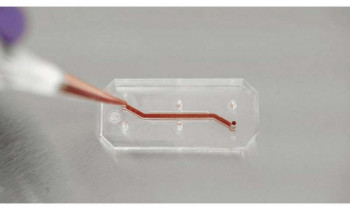Project
Development of a synovium-chondrocyte organ-on-a-chip model with integrated biomechanical stimulation
| Primary Investigator: | Prof Hazel Screen Queen Mary University of London |
| Co-investigators: | Dr Clare Thompson Queen Mary University of London |
| Prof Martin Knight Queen Mary University of London | |
| Funder: | EPSRC OA Tech Network Plus - Pump Priming Grant |
| Project dates: | 01-01-2019 to 30-04-2022 |
| Centre dates: | 01-01-2021 to 01-09-2021 |
Mechanical loading is essential to the health and maintenance of articular cartilage; the connective tissue covering bone surfaces within the joint. The processes of matrix production and catabolism are carefully balanced in response to mechanical queues arising from physical activity. Disruption of this balance leads to the development of osteoarthritis (OA) which is characterised by the progressive destruction, and eventual loss of the cartilage. This is associated with pain, reduced joint function and loss of mobility and represents a significant cost for health services. However there is currently no treatment available that can halt cartilage destruction. This results from a lack of understanding of the disease as existing models are too simple and do not include the full synovial joint or the mechanical environment it experiences.
In this proposal we plan to develop an organ-on-a chip (OOAC) model of the joint to provide a solution to this. OOAC refers to a multi-channel 3D microfluidic cell culture chip, which can simulate the physiological response of whole organs, in this case the synovial joint. This joint chip will incorporate the multiple cell types seen in cartilage and the surrounding synovial environment to mimic human tissue architecture, cellular microenvironment and signalling. Most importantly, this system will permit the mechanical stimulation of the cultured cells as a single unit finally giving us the potential to test drug candidates in a more physiologically representative system. Not only will this model have the benefit of reducing the use of mouse models in research, it will revolutionise the safety and efficacy testing of healthcare products in arthritis and permit the rapid identification of novel drugs for treating arthritis.



